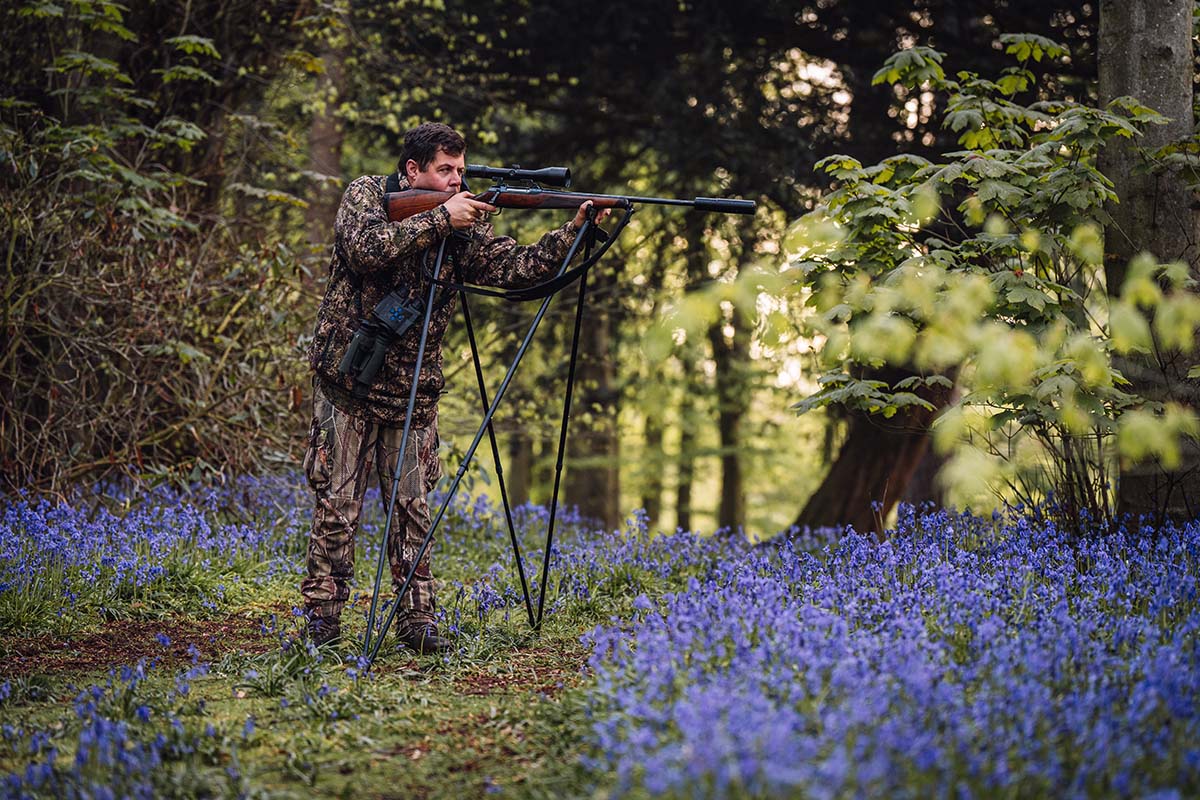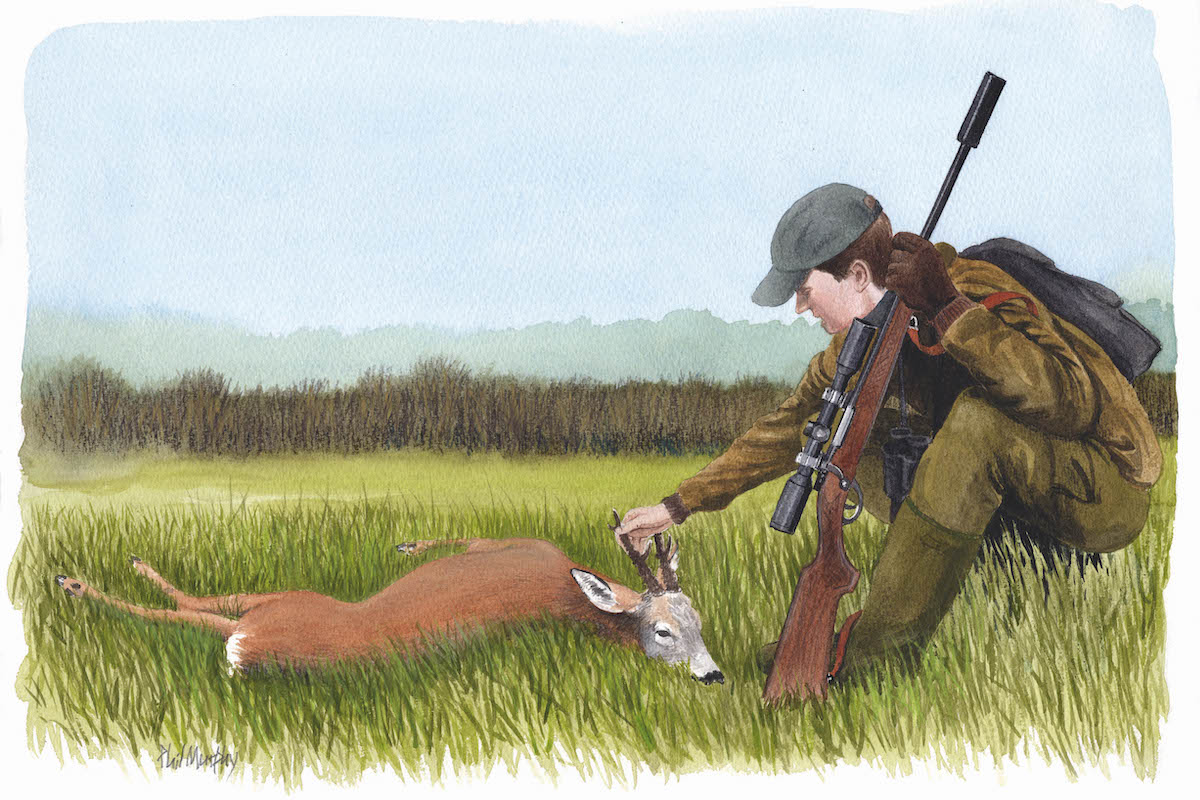Muntjac stalking in Essex
A muntjac stalk through Constable Country is a stark reminder that we are all just stewards of an ever-changing landscape

A muntjac stalk through Constable Country is a stark reminder that we are all just stewards of an ever-changing landscape
Skirting the River Stour, which divides the counties of Essex and Suffolk, lies lush countryside that was made famous the world over by John Constable. Perhaps the greatest-ever English landscape artist, he was born in Suffolk, and this quintessential English rural idyll that he painted is of course known as ‘Constable Country’.
Once voted Britain’s favourite painting, The Hay Wain depicts a now much changed but still recognisable rural landscape. However, it is a lesser-known work that has particular resonance for me. It shows a river scene of tranquil pastures meeting a distant verdant tree line and onwards to a seemingly endless East Anglian sky; it is here that I stepped out in pursuit of deer in the dark, awaiting the arrival of a spring morning.
As I moved softly through the predawn gloom, the landscape murky with low-lying mist, I contemplated what would soon be revealed in the coming light. Much has changed since Constable surveyed this landscape for his sketches. The elms, so prominent in his famous works, are now a rare sight, their decline accelerated with the import of a fungus, the cause of Dutch elm disease. The oaks that largely replaced them, now symbolic of English broadleaved woodland, were actually rarer in this area at that time.

As the morning brightens, Miles clears an area of woodland floor on which to set up his sticks and wait quietly
A rich ecosystem
This corner of Constable Country has been transformed into a beautiful arboretum. Here, among these old natives, tower a multitude of specimen trees from around the world: sequoia, Scotch firs and blossoming Japanese cherry. This extraordinary collection, built over generations with samples collected and brought back from overseas, forms a hidden place, a man-made sanctuary, a rich ecosystem bubbling and shrilling with life.
I wandered down narrow tracks, conscious of the crunch of lush foliage beneath my feet, meeting the floral fragrance of bluebells and the sharper scent of wild garlic as the woodland floor began to warm. Rabbits evaded the approaching danger, departing with a warning thump of their hindlegs as I got close. It was still too dark to see through the binoculars, so I scanned with the thermal imager, identifying a fox crossing ahead. It stopped intermittently, aware of something untoward, and finally departed silently through the trees.
The light was coming fast now, and the movement of a barn owl hunting the grassland fringe became apparent; silently gliding before perching upon a gnarled oak limb, holding sharp-eyed sentry for voles and field mice beneath. I took my cue, sensing it would also soon be my chance to intercept deer as they moved in the half-light. I placed my rifle upon the sticks and surveyed the clearing upwind of me, intently watching for movement.

Glassing the ride ahead shows no sign of deer just yet, but there’s plenty of other wildlife about
The distant eastern glow soon progressed as the sun broke the horizon and, eventually, the light reached the clearing from above the canopy. This quintessential English spring scene, when considered, has origins perhaps more complicated than is immediately apparent. While the bluebells are native, they are under threat from the incursion of the Spanish variety.
The rabbits I had disturbed on my entry had been introduced by the Romans and again by the Normans, and the grey squirrels that began to scurry along the boughs overhead would have been alien to Constable, having been introduced in the Victorian era. The cuckoo is but a brief visitor, having migrated from Africa, navigating continents, crossing timelines and transcending borders. (Read here to learn more about the history and changing role of rabbits in Britain).
A newer addition to this landscape, and the reason for my early-morning presence, is the muntjac. This enigmatic invader has spread since its release in Bedfordshire and now populates much of England. Its success lies in its adaptability and fecundity; unfussy in its choice of habitat, reaching breeding age at just seven months old and having the ability to reproduce year-round. Its progression has made it part of the landscape, yet in doing so it is now changing the very environment it joined. Browsing young saplings, nipping off tender shoots and feasting on starch-rich bulbs is affecting the woodland floor, to the detriment of our ground-nesting birds.
Wild harvest
Two brown shapes suddenly caught my eye at the clearing edge, further inspection with the binoculars identifying a pair of muntjac moving from cover. I manoeuvred my sticks to align for a shot, careful to make no sudden movements. Further study identified a buck and a doe. Content that the doe looked full in the abdomen and identifying no following fawn with both binoculars and thermal, I made the decision it was the one to cull.
Muntjac can be a challenge to shoot as they are such restless, busy deer, rarely staying stationary for long. I tracked this doe with the crosshairs, several times applying the first stages of pressure to the trigger only to then relax again as the doe moved, obscuring the target area. The buck moved back into cover and the doe looked likely to follow. My heart pounded as I waited, poised, ready for the right shot picture to present, ever aware it could fade into the wood at any time, the chance lost.
The doe stepped half into cover, pausing momentarily then turning, exposing its chest, framed in a window of foliage. In an instant the bullet was sent on its journey; the deer dropped immediately.
After a pause, I approached the doe, which was resting motionless on the woodland edge. Looking at its lifeless form, this Asian deer seemed at once both alien and familiar. A rare sight just 20 years ago, their successful colonisation has now made them a ubiquitous part of the East Anglian countryside. I gralloched the beast and deposited the viscera in a rabbit hole nearby; the energy to return to the wood from where it came, the carcass to the chiller, twinning the important roles of managing this species while ethically sourcing meat, a wild harvest from a changing landscape.

Miles spots a muntjac doe with his binoculars, confirming with his thermal there is no fawn
The wood was now full of life, with woodpigeons flapping and taking to their sitty trees before commencing their melodic cooing, while male birds swooped, wings set, in display flight above. I moved onwards, searching for further muntjac making their way back to cover after a nocturnal feed.
A stream had been widened to form a water garden, and it was there that I caught the slightest movement between some gunnera. In an instant it was gone, and I started to wonder if my sleep-deprived mind was playing tricks on me. A scan with the binoculars finally picked up movement again, deep in the cover. A buck was on the move, and I saw the light tips of its broad antlers moving as it intermittently stopped to browse.
Between the water plants and a willow there was a gap where a shot may have been possible, free of obstruction, and I aligned myself to intercept the buck. It was now a waiting game. Sure enough, it came onwards, but stopped short. With the safety catch released and my index finger resting upon the trigger, I willed its next step. It moved forwards, but for a reason I still cannot fathom it crossed the gap at a trot, disappearing into the cover before a shot could be made. I was left with the fleeting image I saw through the scope of the mature buck’s heavy antlers vanishing into the green.
Ever-changing landscape
The journey back to the car, with a carcass hung upon a shoulder strap, led me along tranquil rides through stands of rare trees beyond my naming and then into the bright sunshine, flooding across a pasture. Constable painted the rural landscape and fixed it forever in the world’s eye, but it was a snapshot in time. It has been constantly evolving and continues to do so.
Climate, disease, introduced species, industrialisation and the relentless demands of humans are just some of the instigators of change. We, like our forebears, are temporary stewards of an ever-changing landscape. We have been passed the responsibility of maintaining while adapting, conserving while rebalancing. Conservation must be an active process. What will this landscape look like in a further 200 years? That rests in our hands.








